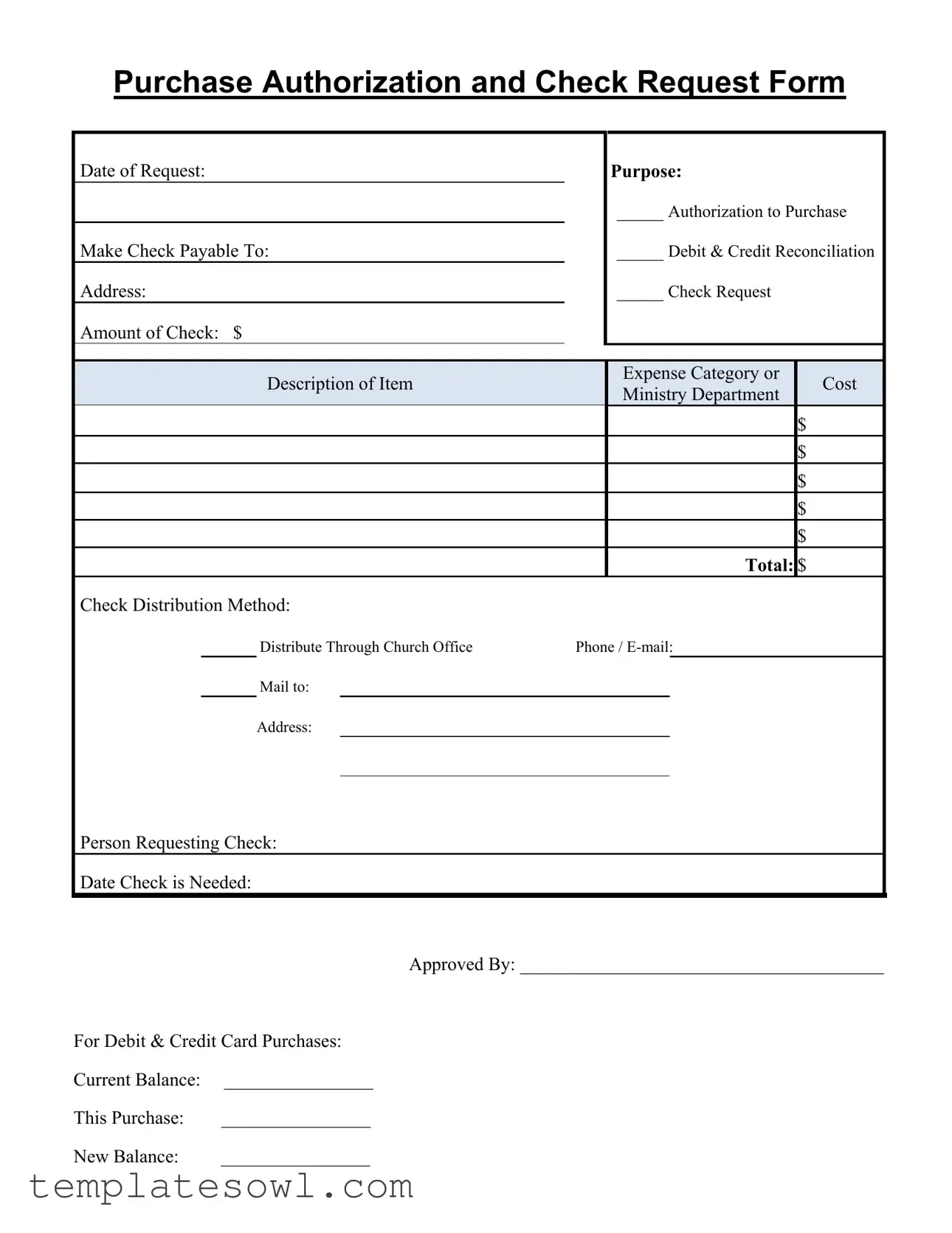What is the purpose of the Church Financial Expense form?
The Church Financial Expense form is a tool that helps manage and track financial requests within the church. It is used for various purposes, including purchasing items, requesting checks, and reconciling debit and credit card expenses. This form ensures that all financial activities are properly authorized and documented, promoting accountability and transparency in church finances.
What information do I need to fill out the form?
To complete the Church Financial Expense form, you will need to provide specific details. This includes the date of your request, the name of the payee, their address, and the amount of the check needed. You also need to describe the purpose of the expense, whether it's for a purchase, reconciliation, or a check request. Additionally, you should indicate the expense category, the ministry department, and the total amount. Make sure to include your contact information, like your phone number or email, and indicate how the check should be distributed.
How do I indicate if my request is approved?
The form includes a section for approval. A designated authority must sign or provide their name in the “Approved By” field. This signature confirms the request has been reviewed and authorized, ensuring that all expenditures are in line with the church's financial policies. It is crucial to have this step completed before any purchases are made or checks are issued.
What should I do if my request involves a debit or credit card purchase?
If your request involves a debit or credit card, you must fill out the section related to card transactions. Here, you will indicate the current balance on the card, the amount of the proposed purchase, and the new balance after the purchase. This information helps maintain accurate records of the church’s financial activities and ensures that the card is not overused.
When should I submit this form?
You should submit the Church Financial Expense form as soon as you determine a need for a financial transaction. To avoid delays, submit it in advance of when you need the check or purchase completed. Providing as much lead time as possible helps ensure that all financial requests are processed efficiently and that the necessary approvals are obtained.

